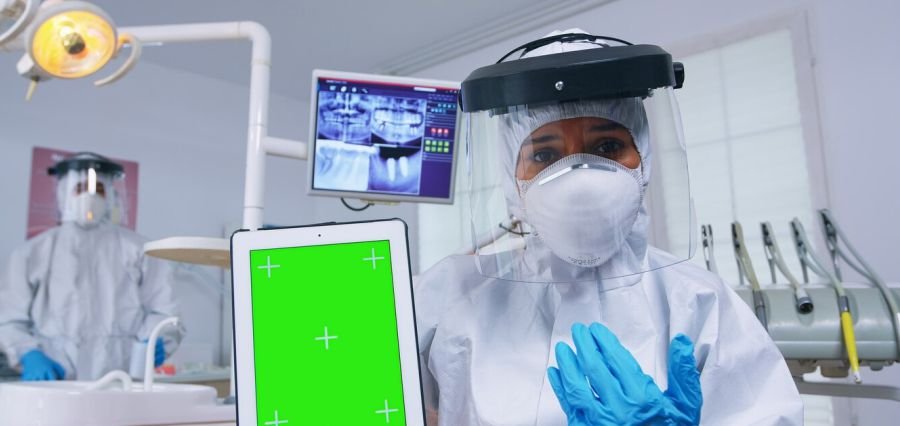The advent of 5G technology is set to revolutionize the healthcare sector, particularly in the fields of remote surgery and telemedicine. Its unprecedented speed, low latency, and high bandwidth promise to enable advanced medical capabilities that were previously beyond reach.
In this article, we will explore how 5G technology is transforming remote surgery and telemedicine.
Remote Surgery—A New Frontier
One of the most exciting applications of 5G technology is its potential to enable remote surgery. The ultra-low latency of 5G networks allows for real-time, precise control of robotic surgical systems, enabling healthcare providers to perform complex procedures on patients located hundreds or even thousands of miles away.
The precision and control offered by 5G-enabled robotic systems can potentially reduce surgical errors and improve recovery times. Surgeons can perform minimally invasive procedures with greater accuracy, leading to less trauma for the patient and shorter hospital stays. This improvement in surgical outcomes not only enhances patient care but also reduces the overall cost of healthcare by minimizing complications and readmissions.
Advancements in Telemedicine
Beyond remote surgery, 5G technology is poised to revolutionize telemedicine. The high-speed, low-latency connections facilitated by 5G will enable seamless remote consultations, real-time monitoring of patient vitals, and the transmission of high-quality medical imaging and data. This advancement is particularly beneficial for patients in remote or underserved areas, who may have limited access to specialized healthcare providers.
5G-powered remote monitoring devices and wearables can provide healthcare professionals with continuous, real-time data on a patient’s health status. This continuous monitoring enables early intervention and improves health outcomes. Enhanced telemedicine capabilities supported by 5G can significantly improve patient care by ensuring that timely and accurate medical information is always available to healthcare providers.
The ability to transmit high-resolution images and videos without delay will also improve the quality of virtual consultations. Specialists can review complex cases, provide second opinions, and assist in diagnostics with the same level of detail as if they were present in person. This capability is particularly crucial for fields such as radiology, dermatology, and pathology, where visual examination is key to accurate diagnosis.
Additionally, 5G can facilitate the development and deployment of advanced telehealth platforms that integrate artificial intelligence (AI) and machine learning (ML) algorithms. These platforms can analyze vast amounts of data in real-time, providing predictive analytics and decision support to healthcare providers. For example, AI-driven tools can help identify early signs of disease outbreaks, monitor chronic conditions, and personalize treatment plans based on patient data.
Challenges and Opportunities
While the potential of 5G in healthcare is immense, several challenges need to be addressed before its widespread adoption. Infrastructure deployment, cost, compatibility, and security concerns are some of the primary issues that must be carefully navigated. As the 5G ecosystem continues to evolve, healthcare providers and policymakers must collaborate to overcome these hurdles and unlock the full potential of this transformative technology.
Addressing these challenges is crucial to realizing the benefits of 5G in healthcare. By leveraging the power of 5G, the healthcare industry can revolutionize the delivery of care, improve patient outcomes, and bridge the gap between urban and rural communities. For instance, ensuring robust and secure 5G infrastructure can help mitigate potential security risks associated with remote medical procedures and data transmission.
One major challenge is the significant investment required to build the necessary infrastructure for widespread 5G deployment. This includes not only the installation of new towers and antennas but also upgrading existing networks to handle increased data loads. Governments and private sector stakeholders must work together to ensure that these investments are made, particularly in rural and underserved areas where the impact of 5G could be most profound.
Compatibility is another critical issue. Many existing medical devices and systems were not designed to operate with 5G technology. Healthcare providers will need to invest in new equipment or upgrade existing devices to take full advantage of 5G capabilities. This transition period may be costly and require extensive training for medical staff to effectively use new technologies.
Security concerns also play a significant role in the adoption of 5G in healthcare. The increased connectivity and data transmission made possible by 5G networks raise the stakes for protecting patient information and ensuring the integrity of medical procedures. Robust cybersecurity measures must be implemented to safeguard sensitive data and prevent malicious attacks that could disrupt medical services.
The Road Ahead
In conclusion, the impact of 5G technology on remote surgery and telemedicine is set to be profound. From enabling real-time remote surgical procedures to enhancing the reach and quality of telemedicine services, 5G is poised to redefine the future of healthcare delivery. As the industry embraces this technological revolution, patients around the world will benefit from improved access to specialized care and better health outcomes.
In the near future, we can expect to see a surge in 5G-enabled healthcare applications and services. Telehealth platforms will become more sophisticated, offering a broader range of services and improving patient engagement. Remote surgery will become more common, reducing geographic barriers to specialized care. And with the integration of AI and ML, healthcare providers will have powerful new tools to enhance patient outcomes and streamline operations.









